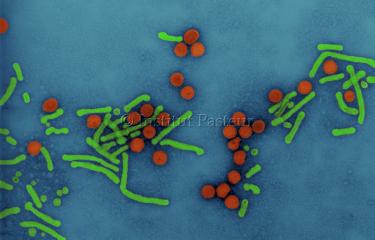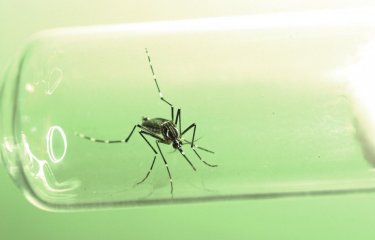Hepatitis B is a viral liver infection that can lead to acute or chronic conditions. Although there is a vaccine that offers protection against the virus, current treatments which prevent the virus from replicating are not curative for infected individuals. Scientists at the Institut Pasteur working in collaboration with the CNRS have demonstrated that a cellular protein is capable of acting as a restriction factor for the hepatitis B virus by degrading the viral DNA.
Chronic infection with hepatitis B virus (HBV) affects more than 250 million people worldwide, putting them at high risk of developing serious liver conditions including liver cancer, an extremely severe form of cancer for which scientists have not yet found an effective treatment.
Although several antiviral treatments can effectively inhibit HBV replication, they are not curative and do not fully eliminate the virus. It is therefore important to eliminate the virus in chronic carriers so as to prevent the disease from developing into cancer.
When viruses infect cells, they make use of cellular machinery, in other words the cell's built-in multiplication mechanisms. To combat viruses, some cellular proteins are capable of interfering with these mechanisms. These are known as viral restriction factors.
Scientists at the Institut Pasteur postulated that a protein mainly produced in several organs, including the liver, could take on the role of a restriction factor.
"During our research, we demonstrated that a cellular protein capable of degrading DNA could be incorporated into the viral particle and induce degradation of the hepatitis B virus genome," explains Jean-Pierre Vartanian from the Institut Pasteur's Molecular Retrovirology Unit. In this process, the enzyme, known as DNase I, produces empty virus particles.
DNase I, considered as a new antiviral restriction factor, is expressed in vitro in a hypoxic (oxygen-depleted) environment and also in patients infected with hepatitis B virus.
"The aim of our research is to use this protein to produce viral particles containing the nuclease so that we can pursue a "Trojan horse" approach," continues Jean-Pierre Vartanian. These particles will target infected liver cells, inducing degradation of the viral and cellular DNA found in them.
Source
Hypoxia-induced human deoxyribonuclease I is a cellular restriction factor of hepatitis B virus, Nature Microbiology, 1er avril 2019
Camille Hallez1,2, Xiongxiong Li1,2,5, Rodolphe Suspène1, Valérie Thiers1, Mohamed S Bouzidi1,2, Cristina M Dorobantu3, Vincent Lucansky3, Simon Wain-Hobson1, Raphaël Gaudin3,4 and Jean-Pierre Vartanian1
1 Molecular Retrovirology Unit, Institut Pasteur, Paris, France
2 Sorbonne Université, Collège doctoral, Paris, France
3 Institute of Viral and Liver Disease Unit, INSERM, Université de Strasbourg, Strasbourg, France
4 Institut de Recherche en Infectiologie de Montpellier, CNRS, Université de Montpellier, Montpellier, France.
5 Lanzhou Institute of Biological Products Co., Ltd, China National Biotec Group Company Limited, Lanzhou, China






